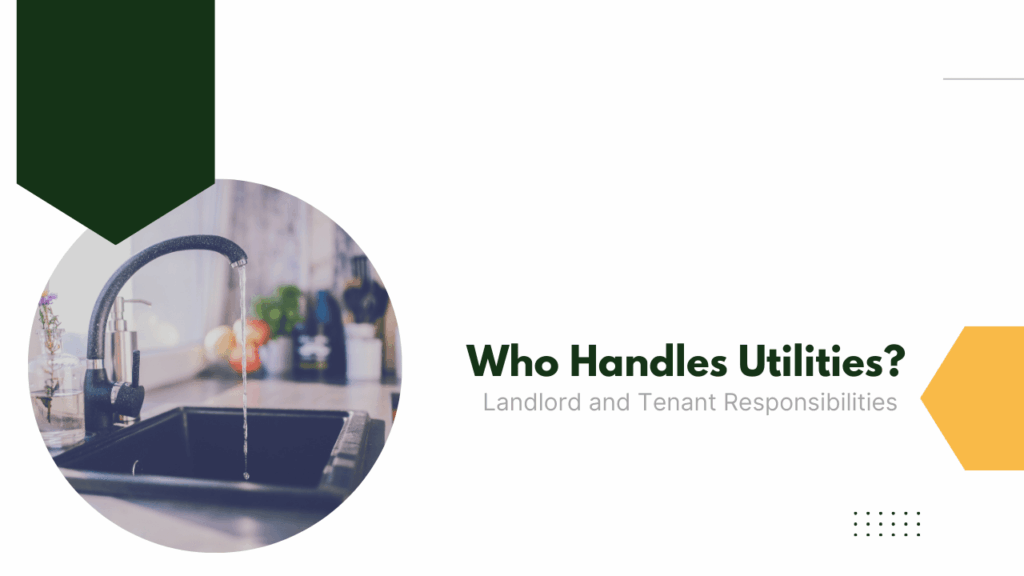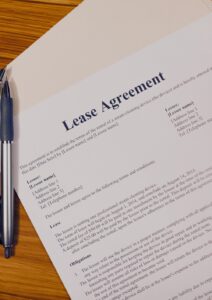
Before you list and rent out a home, you’ll need to decide how you want to handle utilities. This is a question tenants will ask; and you’ll have to tell them whether you expect them to set up their own utility accounts, whether you will pay the utilities and include that in the rent, or whether you have some other system worked out.
There’s no single way to do it. However, it’s important that your lease agreement is clear about whether the utilities are your responsibility as a landlord or their responsibility as tenants.
As we move further into the discussion of responsibilities, it’s a good idea to remember that landlords are generally required to maintain the property and provide a habitable and safe living environment. Landlords are required to respond to maintenance requests and follow all rental laws. These are your core responsibilities. A tenant’s major responsibility is to pay rent. They’re also expected to keep the property clean and in good shape. You want them to report those maintenance needs promptly.
Those are non-negotiables. What is negotiable is the question of who is responsible for keeping the lights on and the water running.
Whether landlords or tenants are responsible for utilities depends on the property, the rental amount, and the type of utility service we’re talking about. As the property owner, you are free to decide how utilities are managed and paid for in your rental property. Let’s take a look at your options.
When You’re Renting Out a Single-Family Home
Most tenants renting a single-family home from you will expect that they’re required to set up their own utility accounts. No one except the tenant is using the water, the electricity, or the gas.
In most single-family rental homes that we professionally manage, tenants are responsible for utilities. This setup mirrors the responsibilities of homeownership and gives tenants more control over their usage and costs. Unlike apartments or multi-family units, where utilities are often shared and included in rent, single-family homes tend to have individual meters, making it simpler for tenants to set up and manage utility accounts in their own names.
Here’s why it makes sense for most property owners:
- Individual Usage
Tenants benefit from controlling their own utility usage. They can deal with the utility service themselves and decide how much to use or conserve energy. Any usage is uniquely based on their lifestyle and behavior.
- Transparency
When tenants pay directly, there’s less risk that you’ll find yourself in the middle of a dispute. They receive and pay the bills and they know exactly what they owe.
- Less Administrative Burden for You
Rental property owners don’t need to manage multiple utility accounts or deal with billing issues. This can be especially beneficial if you own multiple properties or manage without the help of a property manager.
There are some very specific cases where landlords may choose to keep utilities in their name and include them in the rent for a single-family home. A short-term or furnished rental, such as a vacation property, might have utilities included for simplicity and convenience. If the market is super-competitive and including utilities is a good marketing tool, you might consider it. By covering the utilities yourself in a single-family home, you can also avoid service interruption. For essential utilities like water or sewer, some landlords prefer to keep control to avoid the risk of disconnection due to non-payment.
When You’re Renting Out a Building or Multi-Family Units
For landlords and rental property owners renting out homes in multi-family buildings, one of the most strategic decisions is how to handle utility payments. Utilities can impact your cash flow, tenant satisfaction, and overall property value. Deciding who pays, and how, requires a thoughtful approach based on property size, tenant expectations, and your own capacity to follow usage and payments.
- Option 1: Tenants Pay Their Own Utilities (Separately Metered)
The most straightforward and equitable approach is to have each unit separately metered for electricity, gas, and water. This allows tenants to pay directly for their own usage, which encourages conservation and simplifies landlord bookkeeping. This structure is ideal for duplexes, triplexes, or small apartment buildings where individual meters are feasible.
This works well because there’s a predictable cash flow for landlords. Tenants often prefer having full control over their usage and bills. But, there could be a higher upfront cost to owners due to the installation of separate meters, especially if they’re not already in place. In older buildings, this might not even be possible.
- Option 2: Landlord Pays, Then Includes Utilities in Rent
Some landlords choose to pay all utilities and include them in the rent. This model simplifies the experience for tenants and can be used as a competitive advantage in marketing the property, especially in areas with tenants who are not likely to stay in place for more than a year or two.
This model makes it easier for tenants to budget, and it can attract highly qualified renters who are looking for convenience. It simplifies your own collections, too, since one payment will cover everything. But, you’ll have to be careful with your rent pricing to cover fluctuating utility costs. Those winter bills will be higher, thanks to the heating energy that’s used.
If you choose this method, track average monthly utility expenses over time and build in a buffer for price fluctuations. Consider including clauses in the lease about “reasonable usage” and reserve the right to adjust rent annually.
- Option 3: Ratio Utility Billing System (RUBS)
If individual metering isn’t possible, the Ratio Utility Billing System (RUBS) is a popular alternative. This method allocates utility costs based on unit size, occupancy, or a combination. Specialized software or third-party billing companies can manage this for you, or you can work with a professional property management team like ours to ease and navigate both the billing process and the tenant communication. This option passes utility costs to the tenants without individual meters. It still allows you to manage bulk billing.
This has to be done in a specific way. While Colorado prohibits sub-metering of electricity and gas, RUBS is a legal alternative for allocating utility costs. You will want to be detailed in how you explain this to tenants, and make sure it’s disclosed in your lease agreements.
Lease Agreements and Utilities
 Including information about utilities in lease agreements is essential for maintaining transparency and preventing disputes or misunderstandings between you and your tenants. Clearly outlining which utilities are included in the rent and which are the tenant’s responsibility helps set proper expectations from the beginning of the tenancy. This clarity also provides a legal reference point if disagreements arise during the lease term.
Including information about utilities in lease agreements is essential for maintaining transparency and preventing disputes or misunderstandings between you and your tenants. Clearly outlining which utilities are included in the rent and which are the tenant’s responsibility helps set proper expectations from the beginning of the tenancy. This clarity also provides a legal reference point if disagreements arise during the lease term.
We have found that when landlords forget to include specific information around utilities, tenants may assume certain utilities are covered, leading to confusion, late payments, a delay in services, or strained landlord-tenant relationships. A detailed lease not only protects both parties but also contributes to a smoother rental experience.
Maybe let the tenants know where the utility responsibilities land even before they rent your home. We often see this information included in listings, and we think that’s not a bad idea.
This could attract more qualified and interested tenants, too, if they are specifically looking for a rental home that includes utilities, for example. Many renters compare total living costs when evaluating properties, and knowing upfront what’s included, such as water, gas, electricity, or internet, can be a deciding factor.
Transparency in listings builds trust and shows you to be proactive and straightforward. It can also reduce the volume of repetitive inquiries and save time during the screening process. Overall, clearly communicating utility responsibilities from the outset can improve tenant satisfaction and reduce turnover.
There’s no one-size-fits-all answer for structuring utilities in rental properties. What works best depends on your property type, its age, tenant demographics, and local norms. By choosing a model that balances fairness, financial stability, and simplicity, you’ll create a better experience for both you and your tenants.
Clarity is essential. All responsibilities should be outlined in the lease agreement. Specify which utilities the tenant is responsible for, the process for transferring accounts, and any penalties for non-payment or misuse.
Maybe one of these options seems clearly right for you, or maybe you’ll opt for a hybrid model by having tenants pay for electricity and gas while including water, trash, or sewer in the rent. This can make budgeting easier for both parties and ensure essential services are maintained.
This can feel pretty complicated, but it really does not have to be. As long as you’re sure that all of the utilities in your rental property will work once they are turned on, there’s a way to navigate the accounts and the payments when you’re ready to rent.
If you’re looking for specific guidance on who should be handling and paying for utilities at your own rental property, please contact us at Muldoon Associates. We’d be happy to provide a personalized review and create a custom plan.
